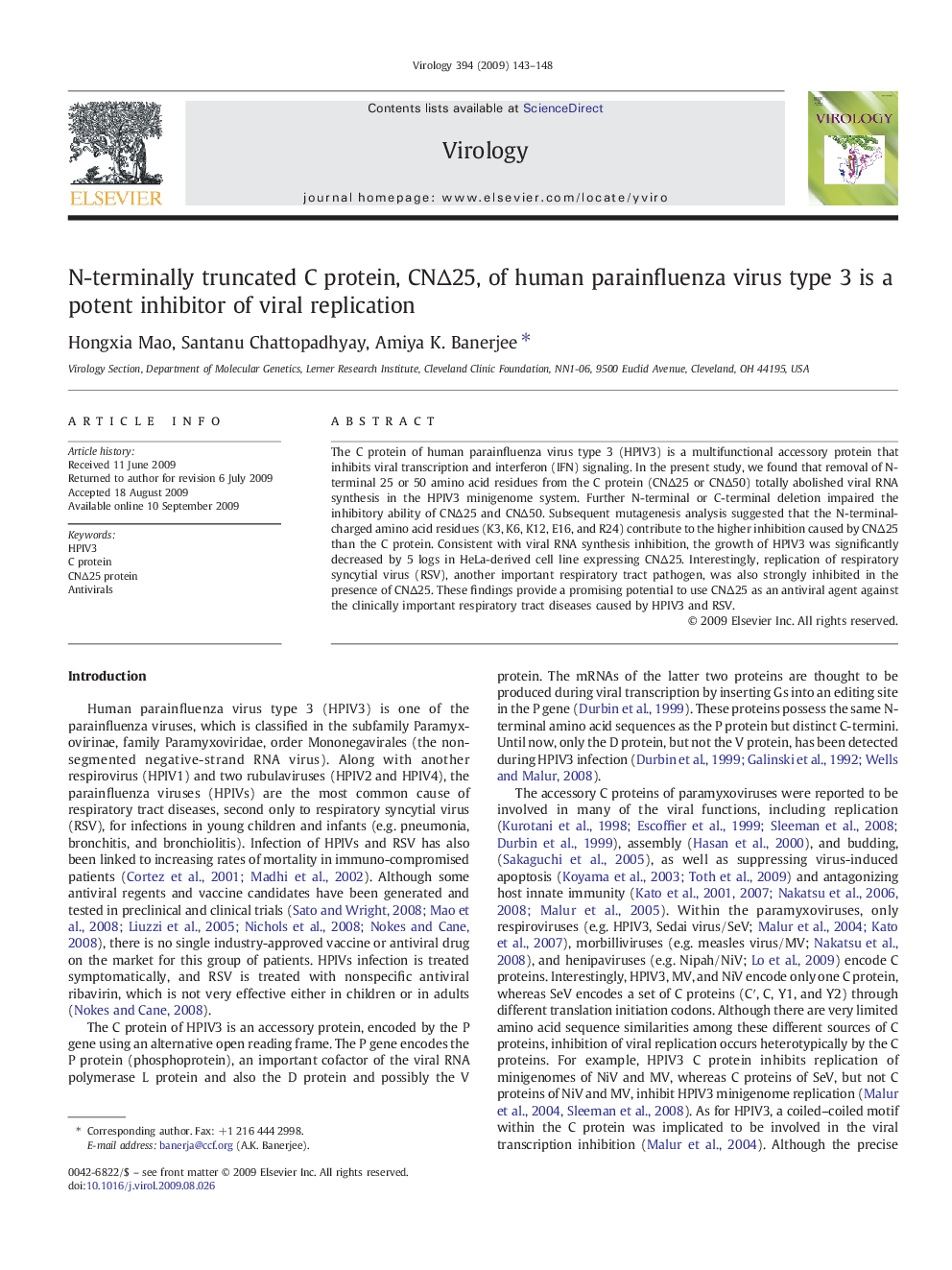| Article ID | Journal | Published Year | Pages | File Type |
|---|---|---|---|---|
| 6141805 | Virology | 2009 | 6 Pages |
Abstract
The C protein of human parainfluenza virus type 3 (HPIV3) is a multifunctional accessory protein that inhibits viral transcription and interferon (IFN) signaling. In the present study, we found that removal of N-terminal 25 or 50 amino acid residues from the C protein (CNÎ25 or CNÎ50) totally abolished viral RNA synthesis in the HPIV3 minigenome system. Further N-terminal or C-terminal deletion impaired the inhibitory ability of CNÎ25 and CNÎ50. Subsequent mutagenesis analysis suggested that the N-terminal-charged amino acid residues (K3, K6, K12, E16, and R24) contribute to the higher inhibition caused by CNÎ25 than the C protein. Consistent with viral RNA synthesis inhibition, the growth of HPIV3 was significantly decreased by 5 logs in HeLa-derived cell line expressing CNÎ25. Interestingly, replication of respiratory syncytial virus (RSV), another important respiratory tract pathogen, was also strongly inhibited in the presence of CNÎ25. These findings provide a promising potential to use CNÎ25 as an antiviral agent against the clinically important respiratory tract diseases caused by HPIV3 and RSV.
Keywords
Related Topics
Life Sciences
Immunology and Microbiology
Virology
Authors
Hongxia Mao, Santanu Chattopadhyay, Amiya K. Banerjee,
